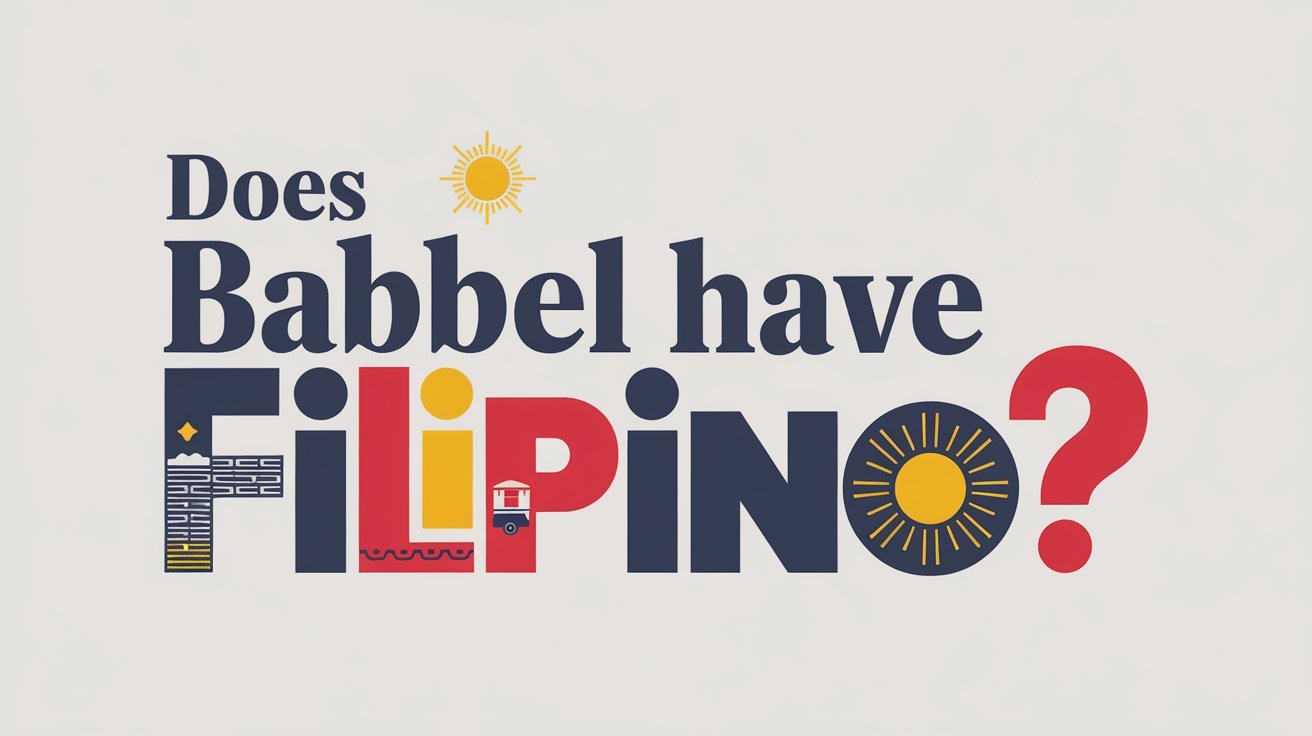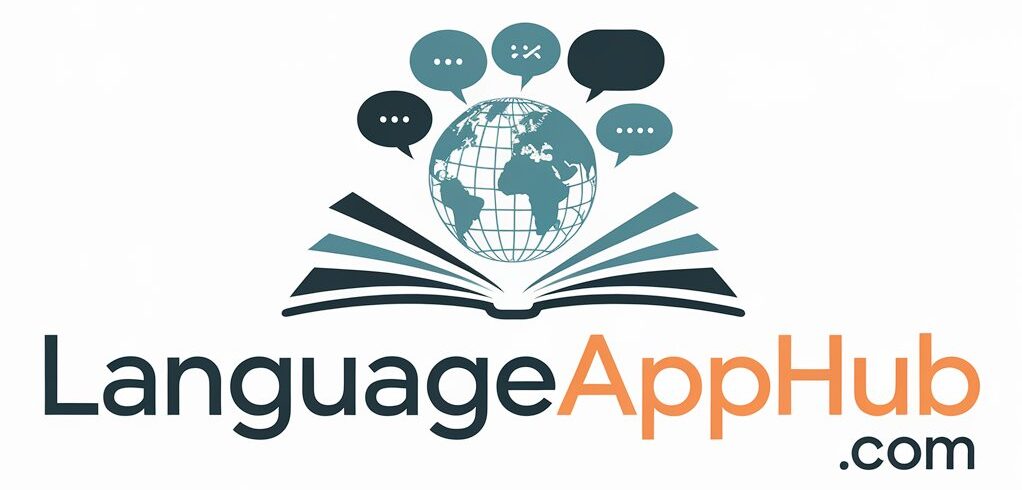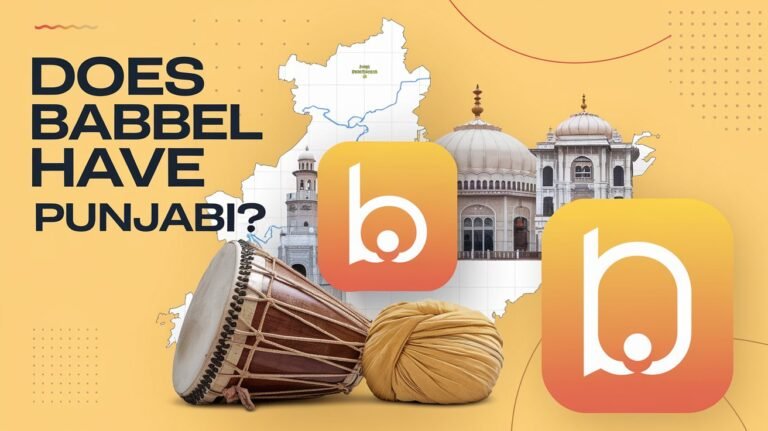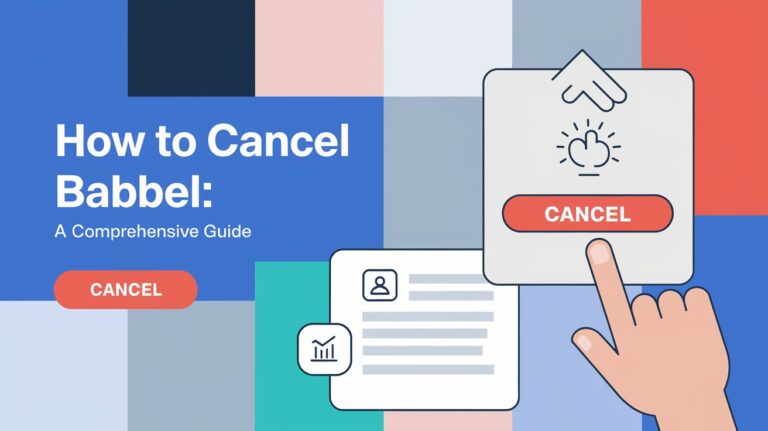Does Babbel Have Filipino? Language Availability

Learning Filipino can be very rewarding. With the right courses, you can become fluent quickly. Babbel is a well-known platform with over 5,000 courses in 14 languages. But, it doesn’t have a Tagalog course, which is part of Filipino.
Don’t worry, there are other choices like FilipinoPod101 and Pimsleur. They offer lessons in Tagalog for beginners and intermediate learners. These courses help you learn Tagalog well.
If you want to learn Filipino, check out these alternatives. FilipinoPod101 has a free version and costs $8, $25, or $47 a month. Pimsleur’s Tagalog lessons are 30 minutes long. They focus on speaking and listening skills.
With these options, you can still learn Filipino, even without Babbel’s course.
Does Babbel Have Filipino Language Courses?
If you’re into learning new languages, like Filipino, it’s key to check out online learning sites. Babbel is a well-known site that teaches many languages. But, it’s important to know if they have Tagalog courses.
Current Course Availability Status
As of now, Babbel doesn’t have a Tagalog course. This might be a letdown for those who want to use Babbel for learning Tagalog. But, there are other places online where you can learn Tagalog.
Future Development Plans
Babbel might add Tagalog courses in the future. As more people want to learn Filipino, Babbel might start offering Tagalog classes.
Similar Languages on Babbel Platform
Babbel doesn’t have Tagalog, but they do have Spanish. Spanish has a big impact on Filipino language and culture.
| Language | Course Availability |
|---|---|
| Tagalog | Not currently available |
| Spanish | Available |
| Other languages | Varying availability |
For now, if you want to learn Tagalog, you might need to look elsewhere. But, as more people learn Filipino, Babbel and others might add Tagalog soon.
Top Filipino Language Learning Platforms
Learning Filipino can be easier with the right tools. Many language learning platforms are out there, making it hard to pick the best one. Popular choices include FilipinoPod101, Pimsleur, and Memrise, each with its own benefits.
For instance, FilipinoPod101 offers audio and video lessons, PDFs, and a mobile app. It’s great for those who are always on the move. Pimsleur uses audio lessons to boost listening and speaking skills. Memrise has a variety of content, like videos and images, to make learning fun.
Other platforms like Glossika, Drop App, and Ling also have their strengths. Think about your learning style and goals when choosing a platform. Using these resources and studying regularly can help you get better at Filipino.
When picking a platform, look at the quality of resources, the teaching method, and support. By choosing wisely, you can make a good study plan and become fluent in Filipino.
Filipino Language Basics and Origins
The Filipino language, also known as Tagalog, has a rich history. It is spoken by over 28 million people. It’s the first official language of the Philippines, used by about 24% of the population.
Language programs help you learn Filipino. They teach you about grammar, vocabulary, and how to pronounce words correctly.
There are different dialects of Filipino spoken across the country. The Philippine government recognizes Filipino as an official language. It’s used in education, media, and government.
To get better at speaking Filipino, try language programs that are interactive and immersive. This way, you can learn by doing and experiencing the language.
Connection to Tagalog
Tagalog is the base of the Filipino language, dating back to the 10th century. It has been shaped by Spanish, Chinese, and Malay cultures. Today, Tagalog is a key part of Filipino culture and identity.
Language programs that focus on Tagalog can deepen your understanding of the language and its cultural importance. This can help you connect with your heritage.
Regional Variations
The Filipino language has many regional variations. Each has its own dialects and characteristics. These variations come from local culture, history, and geography.
Learning about these variations can make you appreciate the language’s diversity. Language programs that offer courses on specific regions can help you understand these differences better.
Official Status
Filipino is one of the two official languages of the Philippines, along with English. It’s used in government, education, and media. The Philippine Constitution recognizes Filipino as the national language.
Language programs focused on Filipino can prepare you for official contexts. They help you develop the skills needed to communicate effectively in these situations.
| Language | Native Speakers | Official Status |
|---|---|---|
| Filipino (Tagalog) | 28 million | Official language of the Philippines |
| English | 85% of the population | Official language of the Philippines |
Essential Filipino Language Resources
Learning Filipino can be exciting and rewarding. The right resources make a big difference. There are many language apps and tutors to help you improve.
FilipinoPod101 and Pimsleur are great alternatives to Babbel. They offer courses and lessons for all learning styles.
Language apps are popular for learning Filipino. Here are a few:
- Memrise: a user-friendly app with many courses and lessons
- Cudoo: an online platform with Tagalog courses and tutorials
- uTalk: a language app with interactive games and exercises
Working with language tutors is also beneficial. Italki is a top platform for finding online teachers from the Philippines. They offer lessons at affordable rates. With the right support, learning Filipino can be fun and rewarding.
| Resource | Description |
|---|---|
| FilipinoPod101 | A comprehensive online course with audio and video lessons |
| Pimsleur | A language learning platform focusing on practical vocabulary and expressions |
| Italki | A platform for finding online language teachers from the Philippines |
Self-Study Methods for Filipino
Learning Filipino on your own can be very effective. With online learning, you can find many courses and resources at home. Online communities offer support and practice chances.
Apps like FilipinoPod101 and Pimsleur are great for learning. They have lessons and exercises to boost your skills. Online courses also have interactive lessons and quizzes to track your progress.
Effective Practice Techniques
Regular practice is key to self-study success. Try journaling in Filipino daily, listen to music or podcasts, and talk to native speakers. Mixing these with online learning helps you reach your goals.
Online Resources and Communities
There are lots of online resources for Filipino learners. Language exchange sites connect you with native speakers. Online forums and social media groups are great for asking questions and sharing tips.
Popular Filipino Language Apps
Learning Filipino is easier with the right tools. Mobile apps have made studying languages more convenient. Memrise, Ling, and FilipinoPod101 are top choices, each with unique features and prices.
These apps offer interactive lessons and quizzes to boost your skills. Memrise has community-driven courses, while Glossika uses repetition for listening. Prices range from free to $30 a month.
Here are some popular Filipino language apps and their pricing options:
- Memrise: free
- FilipinoPod101: starts at $4 a month
- Glossika: $30 a month
- Mondly: starts at $9.99/month
- uTalk: $4.99 monthly per language, $9.99 for access to all 140 languages, or $99.99 for a lifetime subscription
These apps meet different learning needs. They make studying fun and engaging. By using them, you can enhance your language skills and reach your goals.
| App | Pricing | Features |
|---|---|---|
| Memrise | free | community-driven courses |
| FilipinoPod101 | starts at $4 a month | interactive lessons, quizzes, and exercises |
| Glossika | $30 a month | high repetition of lexical chunks for listening exercises |
Cultural Context in Filipino Language Study
Understanding the cultural context of the Filipino language is key to mastering it. The Philippines boasts a rich cultural heritage, and its language reflects this. With 183 living languages, the cultural context of Filipino is both diverse and complex.
Language programs that include cultural context help learners grasp the language’s subtleties. For instance, learning regional expressions and social etiquette boosts confidence in everyday interactions. Here are some important cultural aspects in Filipino language study:
- Regional expressions: The Philippines has a wide range of regional expressions, each with its own unique traits and subtleties.
- Social etiquette: Knowing social etiquette is vital for effective communication in Filipino culture.
Adding cultural context to language programs, learners gain a deeper understanding of Filipino. This leads to better language fluency. It also improves their overall learning experience and makes them more skilled communicators.
| Aspect of Cultural Context | Importance in Language Study |
|---|---|
| Regional expressions | Helps learners understand local nuances and variations |
| Social etiquette | Enhances effective communication and builds relationships |
Time Investment for Filipino Fluency
Learning Filipino takes a lot of time, but the right tools can help you get there fast. Apps like FilipinoPod101 and Pimsleur let you learn at your own pace. They fit into your schedule and match your learning style.
Working with a language tutor is also a great way to learn. They give you one-on-one attention and feedback. Studies show that private tutoring can make you 30% more likely to remember lessons. It can also make you proficient in the language two times faster than classroom learning.
Here are some benefits of using language apps and tutors: * Flexible learning options * Personalized attention and feedback * Increased lesson retention rates * Faster achievement of language proficiency
But there’s more to learning than just apps and tutors. Try watching Filipino movies or listening to Filipino music. Regular checks every 4 to 6 weeks can also keep you on track and motivated.
| Language Learning Method | Time Investment | Cost |
|---|---|---|
| Language Apps | 30 minutes per day | $10-20 per month |
| Language Tutors | 1-2 hours per week | $20-100 per hour |
Mixing language apps, tutors, and cultural activities, you can make a plan that works for you. With regular practice and commitment, speaking Filipino fluently is possible.
Cost Analysis of Filipino Language Programs
Learning the Filipino language involves considering the cost. There are many options, from affordable to expensive. It’s important to find one that matches your budget and learning style.
Online courses are a popular choice for language learners. Platforms like FilipinoPod101 start at $4 a month. Others, like Pimsleur Tagalog, cost $14.95 per month or $119.95 per level. Memrise offers free courses, including Tagalog content added by the community.
Online Courses
Online courses are a convenient and often affordable way to learn Filipino. Here are some options to consider:
- FilipinoPod101: $4-$25 per month
- Pimsleur Tagalog: $14.95-$119.95 per month/level
- Memrise: free
- Mondly Tagalog: $9.99-$19.99 per month
Private Tutoring
Private tutoring offers one-on-one instruction. Platforms like italki provide tutoring services at varying prices, based on the tutor’s rates.
Group Classes
Group classes are perfect for learning with others. Prices vary based on the provider and location.
The cost of Filipino language programs depends on the type and level of instruction. By considering these options, learners can find the best program for their needs and budget. This helps them on their journey to fluency in the Filipino language.
Common Challenges in Filipino Study
Learning Filipino, like Tagalog, is rewarding but comes with challenges. One big issue is understanding the language’s unique grammar and sentence structure. Tagalog focuses on verbs, which can confuse beginners. Also, it has many words from Spanish, Chinese, and Malay, making it hard to learn new words.
Another problem is finding good resources for adult learners. Most materials are for kids or school use. But, apps like Duolingo and sites like Coursera and Udemy have great Tagalog courses. They offer lessons that help learners get past these hurdles.
Consistent daily practice is key to improving language skills, and using a combination of language courses and resources can be an effective way to learn Tagalog.
Some common challenges faced by learners of Tagalog include:
- Mastering the unique grammar and sentence structure
- Building vocabulary and memorizing words with no direct English equivalents
- Accessing high-quality, adult-focused resources for learning Tagalog
- Practicing consistent daily to improve language skills
Using language courses, like those from FilipinoPod101 and Pimsleur, can help. They offer the support and structure needed to beat these challenges and reach your goals in learning Tagalog.
Next Steps for Your Filipino Language Journey
Starting your journey to learn Filipino is exciting. It’s a path filled with new discoveries. Find language resources and study materials that fit your learning style and goals.
Use a mix of lessons, immersive experiences, and practice to improve your skills. This will help you get better at speaking Filipino.
If you’re just starting or already know some Filipino, practicing every day is key. Spend 15-30 minutes each day on your studies. Also, try Filipino food and join in local customs to learn more.
Talking with native speakers is also important. Use language exchange platforms to practice speaking.
Getting good at Filipino is possible. Set goals, track your progress, and celebrate your wins. This will keep you motivated. With the right tools and determination, you’ll soon be able to speak Filipino fluently.






